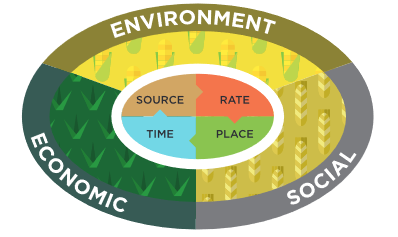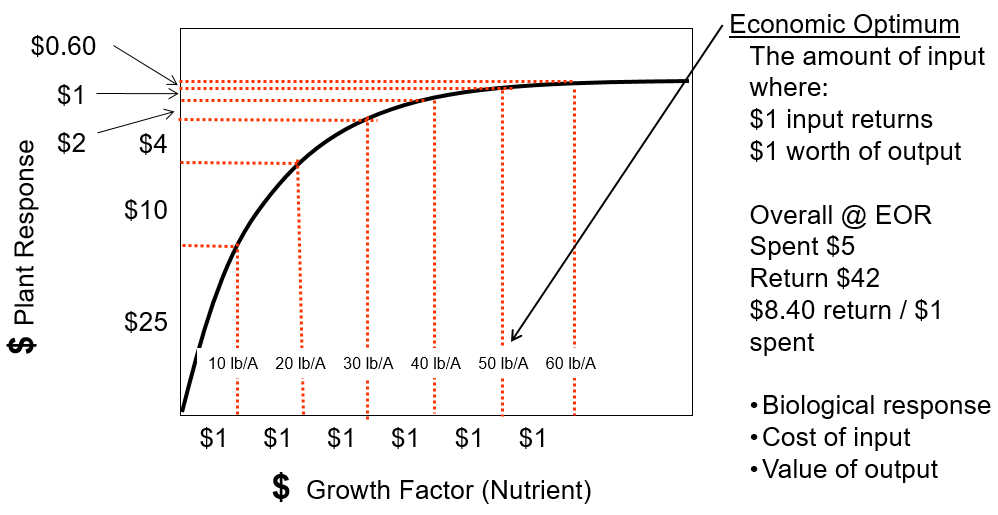The 4R's of Nutrient Management
We have heard the term, “4R's” many times, but what does it actually mean?
The 4R's of nutrient stewardship, or nutrient management, are commonly referred to when talking about proper nutrient application. The 4R's stand for right source, right rate, right time, and right place and serve to guide farmers to the management practices that help keep nutrients on and in the field. Implementation of the 4R's helps to align the economic, environmental, and social components of nutrient management. The Nutrient Stewardship 4R Pocket Guide helps to explain what the components are of each of the 4R's.

The first R is Right Source. In order to determine the right source, the following should be taken into account:
- Are the fertilizer nutrients being used (commercial or manure) available for immediate or delayed crop uptake?
- Is there a combination of fertilizers that can be utilized best?
- What nutrients are already available in the soil?
The next R is Right Rate:
- Match amount of fertilizer applied to the crop nutrient uptake
- What is the crop nutrient demand?
- Perform a soil analysis (manure analysis as well if using this as the fertilizer source) to appropriately match the amount of fertilizer needed for crops based on individual field fertility
- Make sure equipment being used to spread the fertilizer or manure is calibrated properly for appropriate distribution
- Consider crop yield goals
- Consider the law of diminishing returns: the unit of nutrient applied = crop yield increase generated; see the attached chart

The third R is Right Time:
- Plan for fertilizer nutrients to be available during crop demand – many times this is close to planting
- Consider the weather and seasonal conditions:
- Potentially more nutrient runoff during the winter
- Saturated fields are unable to retain nutrients effectively
- Application of fertilizer immediately before a large rainfall could contribute to nutrient runoff
- The MI EnviroImpact Tool is a decision support tool to help with short-term planning of nutrient applications
- Include mitigation of potential odors, mainly with manure
Lastly, determine the Right Place:
- Place fertilizer in the root zone, where crops can successfully access the nutrients
- Consider the management practices for each field based on the following:
- Crop being grown
- Soil type
- Slope
- Distance to surface waters
- Soil characteristics (can differ throughout the field) like nutrient supply capacity and the vulnerability to nutrient loss
- Phosphorus or P-Index
- Potentially incorporate GPS and variable rate seeding data
Michigan State University Extension recognizes the importance of nutrient stewardship in the state of Michigan, especially when reflecting on our Great Lakes. This makes concepts like the 4Rs that much more important and valuable.



 Print
Print Email
Email